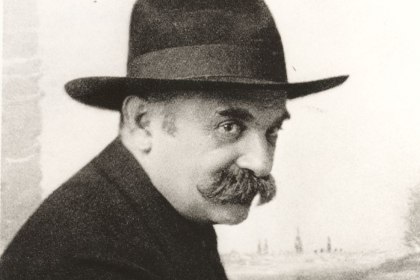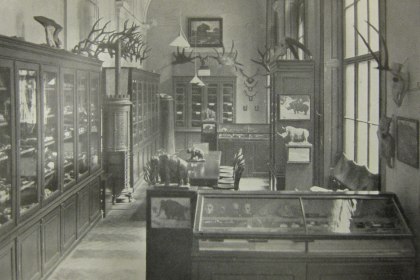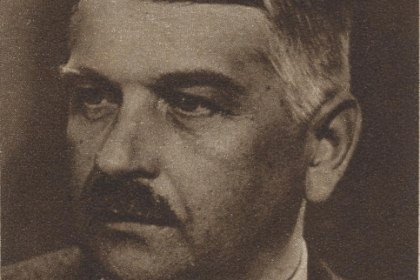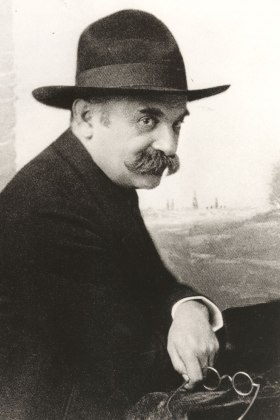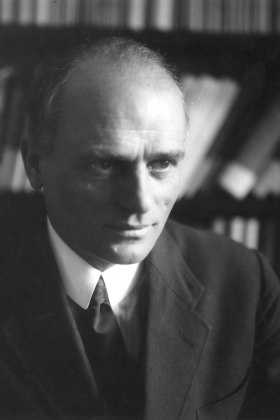Dismissal of political enemies at the University of Vienna during Austrofascism
Compared to the dismissals and forced retirements of teachers during National Socialism, the years of Austrofascism are seen only as a “small incision”, but still significantly changed the University of Vienna. When looked at in detail, they even represent the largest break percentage-wise until that point.
Fine line between “downsizing of civil servants” and political “disciplining”
Immediately after the parliament shut down in March 1933, political interventions in the Austrian university system began on a scale that had been unparalleled since 1848. Elements of the university and student self-administration were removed with the goal of eliminating “enemies of the corporative idea”. The legal actions to achieve this were justified with austerity measures and downsizing in light of the Great Depression. Often, these “budget measures” were nothing more than hidden disciplinary actions to exclude oppositional teachers of the University of Vienna from research and the education of the student elite. Arbogast Fleisch as commissioner in the Office of the Federal Chancellor was centrally responsible for these “extraordinary personnel sanctions”.
From the introduction of a new oath for civil servants in June 1933 to the mandatory membership in the Vaterländische Front (Fatherland’s Front), the Austrofascist regime made clear which role public employees, like the teachers at the University of Vienna, were supposed to play. They were to always be loyal to the state and promptly report any criticism by colleagues, students and even their own family members.
Apart from swearing civil servants to the “Christian corporative state” and from politically motivated “downsizing measures”, the Austrofascists passed an immediate change in the habilitation process, which had the effect that habilitations (or their rejection) no longer needed any justification. Both personal and moral qualifications now became a legal reason for appointments or their refusal. Sociologist Ernst Karl Winter, for example, experienced this first hand. In 1933 he was elected Vienna’s vice-mayor, but through his politics – often seen as “worker-friendly” – he lost the backing of the Austrofascist government. When he attempted to renew his teaching license at the University of Vienna in 1934, he was prevented from habilitating among other things due to his positioning as an opponent of Austria’s “Anschluss” to National Socialist Germany. Othmar Spann, considered a proponent of the Anschluss and a theorist of the corporative state, was substantially involved in this measure. Furthermore, the Austrofascist government decreed that politically inconvenient teachers could be removed from their teaching positions without any special procedures and could be sent into early retirement.
Until today there are no verified numbers on politically motivated suspensions, dismissals or forced retirements of opponents of Austrofascism. First research results in the form of analyses of the university’s personnel lists from 1932/33 to 1937/38 show a more than 23 percent drop in professorships and associate professorships. To be exact, the number of full professorial chairs decreased by more than 14 percent, while the number of associate professorships even dropped by more than 37 percent. Studies on the individual fates behind these numbers prove the practice of hidden disciplining and exclusion under the guise of austerity measures. Interestingly, more National Socialists and their sympathizers than “leftists” or liberals were fired or (forcibly) retired from the University of Vienna after 1933/34. This does of course not mean, however, that “leftist” teachers were treated more mildly under Engelbert Dollfuß and Kurt Schuschnigg’s dictatorship. In 1934 almost no declared liberals or “leftists” were active at the University of Vienna any more, with women being even more seldom among this group. This was due to the fact that until 1933 an alliance of Catholics and German nationalists at the universities had seen to it that many women, “leftists” and/or Jews had left the University of Vienna and had made their way into non-university and international institutions instead. Maria Jahoda, Paul Lazarsfeld and Hans Zeisel are three examples of people who represent successful non-university research. Their revolutionary social scientific study on the “Unemployed of Marienthal” in the 1930s was dedicated to the socio-psychological effects of unemployment.
Retired professors
The growth of the number of emeritus professors is diametrically opposed to the development of professorial chairs. From 1933 to 1938 the number of retirements grew by more than 91 percent. Three of the most well-known political exclusions around 1933/34 were the former Rectors and National Socialists Wenzel Gleispach (Rector in 1929/30), Hans Uebersberger (1930/31) and Othenio Abel (1932/33). After Gleispach had expressed his criticism of the war economic enabling act from 1917 and the oath of office in a German magazine in 1933, he was attested to have a “subversive attitude” and was subsequently forcibly retired. Shortly thereafter he was called to Berlin. His colleagues Uebersberger and Abel experienced similar fates. They too followed calls to National Socialist Germany and continued their careers there, in a like-minded environment, after becoming political enemies in Austrofascist Austria.
“Leftist” or liberal professors were also “removed”: philosopher Heinrich Gomperz and anatomist and city council member in the “red Vienna”, Julius Tandler, were both retired against their will in 1934. There seem to have been several reasons for Gomperz’s forced retirement. For a long time he himself suspected he had been “removed” from the university because he refused to join the Vaterländische Front, which was mandatory for civil servants during Austrofascism. Much later he learned that he was retired to enable Dietrich Hildebrand’s reappointment. Hildebrand devoted himself to the teachings of “Catholic ideology” and had been Dollfuß’s declared ideal candidate. Thus, he was made an associate professor against the will of several members of the faculty. Julius Tandler was retired due to his political (social democratic) opinions and his Jewish heritage.
However, numerous National Socialist professors were able to stay at the University of Vienna, among them botanist Fritz Knoll, anatomist Eduard Pernkopf and jurist Ernst Schönbauer. All three were illegal National Socialists who advanced to the positions of Deans and Rectors after the “Anschluss” in 1938. Before that they had been kept in office despite their open and/or secret agitation.
The Schlick case
An exceptional act of violence also occurred in the years of Austrofascism: Moritz Schlick, professor of philosophy, was murdered in the University of Vienna’s main building in 1936 by Hans Nelböck, who had obtained his doctorate under Schlick. The way this case was handled shows how corrupted the Christian-conservative and anti-Semitically dominated university- and media landscape was – the newspaper coverage made it seem as though Schlick’s positivistic teachings were more despicable than the murder itself. In one obituary, the diagnosed “insanity” of the perpetrator was traced back to Schlick’s “impious” teachings. Schlick’s successor, Alois Dempf, again was an ideologically as well as politically loyal academic.
Continuities after 1938 and 1945
Austrofascism’s impact on the universities may have only been marginal when compared to that of National Socialism, but it still represented a sort of “practice” for the dictatorship and intruded on the universities’ autonomy on an unprecedented scale. In other ways, Austrofascism also had repercussions at the universities that were still felt after the war, in the Second Republic. Indeed, several university political protagonists from the years between 1933 and 1938 influenced Austrian university politics until the late 1960s: Otto Skrbensky, responsible for the political “disciplining” of students after 1934, was department head in the Ministry of Education from 1945 to 1953. The dictatorially installed Austrofascist student leaders Heinrich Drimmel and Josef Klaus even became Minister of Education (1954-1964) and Federal Chancellor (1966-1970), respectively. And the last Minister of Justice during Austrofascism and professor of constitutional and administrative law, Ludwig Adamovich Senior became the first rector of the University of Vienna after the Second World War, on May 1, 1945.
Articles
- Students and teachers as political actors in the 19th and 20th centuries
- Student corporations in the 19th and 20th century
- Terror against the Anatomical Institute of Julius Tandler
- Dismissal of political enemies at the University of Vienna during Austrofascism
- Expulsion of teachers and students in 1938
- External restructuring by the “Führer-principle” and National Socialist officials
- The de-Nazification of the professorate at the University of Vienna
Last edited: 01/14/23


